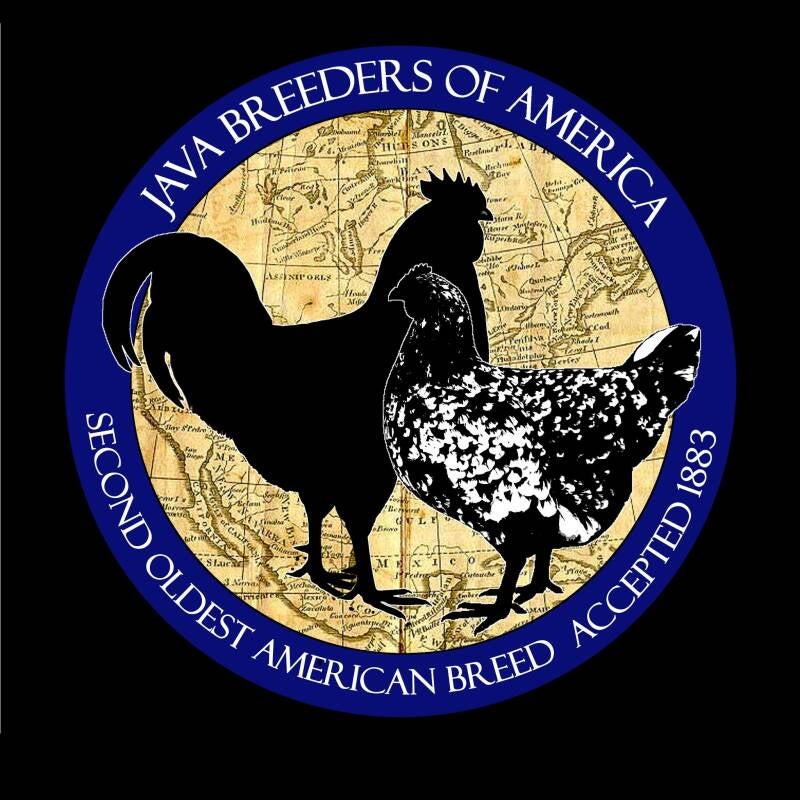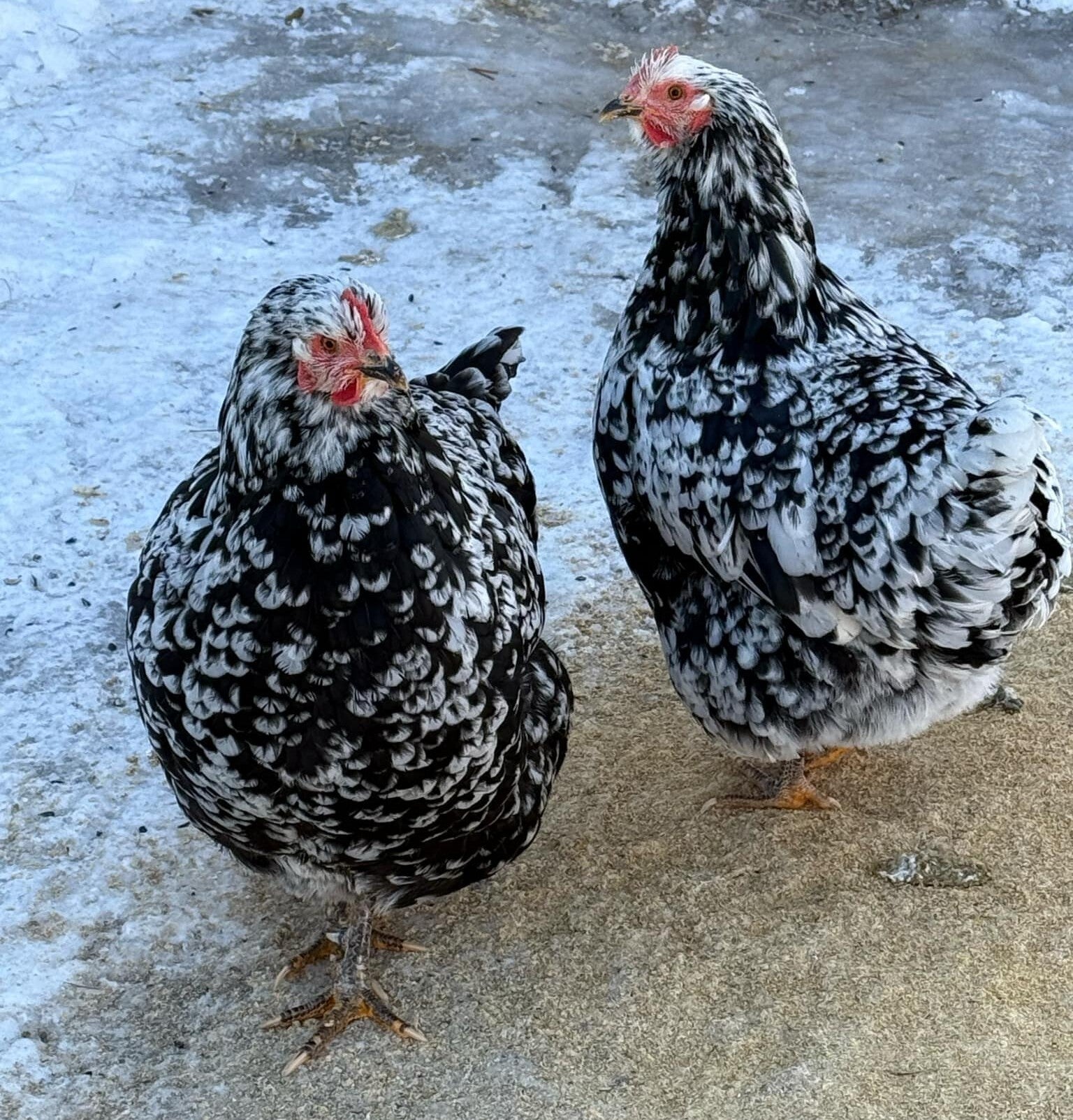
“Saving the Java, in general, might provide the tools we need for the future. We need to continue to preserve the genetics of these rare breeds for future generations.” Tim Christakos, Senior Exhibit Specialist of Chicago’s Museum of Science and Industry.*
Information
Discover the unique charm of our Mottled Java chickens at Quarryside Farm. A historic American breed with striking beauty and deep heritage.

A Legacy Breed
The Java is the second oldest breed of chicken developed in America. Its history before arriving in America is not certain, but its ancestors were reputed to have come from the Far East, some possibly from the isle of Java, in the first half of the 19th century. In any case, the breed was developed in America and known to exist in America sometime between 1835 and 1850, although it is possible 1835 may even be late for the breed’s development period.
Conservation Priority: Critical
Use:
Eggs, Meat
Egg Color:
Light brown
Egg Size:
Large
Weight:
Male 9.5 lbs. / Female 7.5 lbs.
Temperament:
Hardy, calm
Characteristics:
Excellent forager; likes to range. Known to go broody and be
great mothers. They develop slowly, but average lifespan is up to 8 years, continuing to lay long after other breeds stop.
Resilient Qualities for a Sustainable Future
ADAPTABILITY: Hardy and resilient, they tolerate hot or cold weather, if given shelter, but those with larger combs are prone to frostbite. They are excellent foragers, good brooders, and attentive mothers.
BIODIVERSITY: This ancient lineage has a long period of adaptation to American climates. Its genetic diversity will benefit poultry and farmers during climate and environmental changes, including disease threats and changing economic forces.
More information: The breed is friendly and calm and seldom aggressive, though chicks may be a bit flighty. As such, they are a good breed for children. They are also amiable with other breeds of chickens. They can deal with being confined, but prefer to forage in large areas. Java hens do well in cold weather but some roosters that have larger combs may need to be protected from frostbite. They can thrive in both hot and cold climates if protected as needed from the elements. They tend to keep together in tight flocks.


APA Status:
Javas come in four color varieties: Black, Mottled, White, and Auburn.
Mottled Java feathering is black with splashes, or mottles, of white. They have very intense red eye color, and their legs should be a broken leaden-blue with yellow foot soles.
The body type is one of the most distinguishing features of Javas. They have a rectangular shape, much like the Rhode Island Red, but with a sloping topline. The back should be long – in fact Javas have the longest backs in the American Class. Javas have full, well-rounded breasts. Originally this breed, like the Buckeye and the Rhode Island, had tight feathers. Males weight 9.5 lbs. and females 7.5 lbs.
The single comb on all Javas should not have a point too far forward on the comb (the first point should be above the eye, not above the nostril). While this characteristic is of no economic value, it may be important in identifying the purity of the stock. It also points to a single-combed bird that was produced from pea-combed ancestors.
Saving the Breed
The Black and the Mottled were admitted to the APA Standard of Perfection in 1883 (the White, although admitted, was dropped by 1910). The White became extinct by the 1950s and the Auburn in the 1870s. Even the Black and the Mottled were nearly lost in the 1990s, having fewer than 150 breeding birds.
Alerted to this loss, specialty breeders and historical societies dedicated their efforts to saving the breed. In 1996, Garfield Farm Museum, an 1840s living history museum in Illinois, started to restore the Black Java in earnest from a purebred flock. They started with about a dozen birds whose bloodline was confirmed by genetic testing.
In 1999, Tim Christakos of Chicago’s Museum of Science and Industry (MSI) chose Garfield’s Java eggs to hatch in MSI’s Decoding Life exhibit: a large incubator where visitors can view chicks hatching. It hatched out thousands of Black and Mottled Java chicks, which were sold on to private breeders. Through such large-scale hatching, recessive genes eventually emerged, giving rise to White chicks from 1999 and Auburn from 2003. These were retained as breeding stock to restore the extinct varieties.
It was difficult to separate the varieties, as recessive genes can remain hidden for many generations. It even took time to restore pure-breeding Black lines. The Livestock Conservancy (TLC) assisted in the selection of breeding birds and setting up a breeding plan. Then, local breeders took offspring from these stabilized lines to cultivate sustainable populations.
In 2010, the Java Breeders of America formed to support their efforts.



Breed History
Taken from the Livestock Conservancy Website:
Javas did not reach Britain until 1885, and this is important as those who claim they originated in pure form directly from the island of Java cite England as their source of stock (from Java by way of England).
The Java was a popular homesteading fowl as it is a dual-purpose breed that does well as a free-range forager. While it has a slower in rate of growth than more modern breeds, in the mid-1800s, the Java was noted for its meat production. The Java breed was used to develop many other American breeds, including the Jersey Giant, Plymouth Rock, and Rhode Island Red. Unfortunately, these breeds later eclipsed the Java in popularity.




Bring home a piece of history
Interested in adding Mottled Javas to your farm? Contact us to learn more about availability and how to reserve these unique birds!
